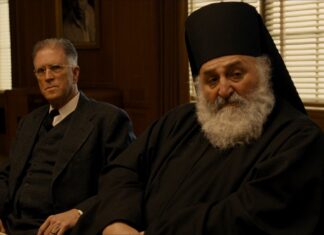By Kevork Keushkerian
LOS ANGELES — The Armenian General Benevolent Union’s Ardavazt Theatre Company was founded in 1979. Its first performance took place the following year at the AGBU Convention in Los Angeles. Krikor Satamian, AGBU’s artistic director, assumed the responsibility of directing the Ardavazt Theatre Company in 1988.
For more than three decades, the theater company has been actively involved in the lives of Southern California theater enthusiasts by performing more than 50 dramas and comedies written by Armenian and non-Armenian authors. This tremendous success couldn’t have been achieved without the financial support of AGBU’s Central Board of Directors and the many benefactors, who over the years have been contributing generously and thus have been called “Friends of Ardavazt.” It was high time for these supporters to be honored and recognized. This worthy tribute was the brainchild of Ardavazt Theatre Company’s Committee, headed by Ara Babayan. It took place on Saturday, August 25, at the Boyadjian Hall of AGBU’s Vatche and Tamar Manoukian Center in Pasadena. The hall was artistically decorated by artist Manoug Satamian. Ardavazt Committee member John Samuelian delivered the opening remarks. He welcomed the guests and thanked the many supporters of Ardavazt Theatre Company who, over the years, had been sustaining the existence and survival of this group in times of hardship.
During dinner, more than 150 guests enjoyed the soft music provided by accordionist Nikko Ariano. After dinner, entertainment was provided by the many talented amateur actors of Ardavazt Theatre Company, under the direction of Artistic Director Krikor Satamian.
The comedic sketches performed included a scene in the nail salon, where the Vietnamese proprietor was keenly interested in marrying her son. Another sketch was a scene from Othello, where Othello and Desdemona conversed in Indian. Although no one understood the language, the body language and facial contractions conveyed the meaning of the sketch, making it enjoyable to the audience.
A scene depicting a trial in the people’s court was hilarious, as the Persian- Armenian wife was seeking divorce from her Lebanese-Armenian husband, and none of them were in command of the English language. The self-professed interpreter made the sketch more interesting by looking after his own interest, rather than that of the disenchanted couple.







